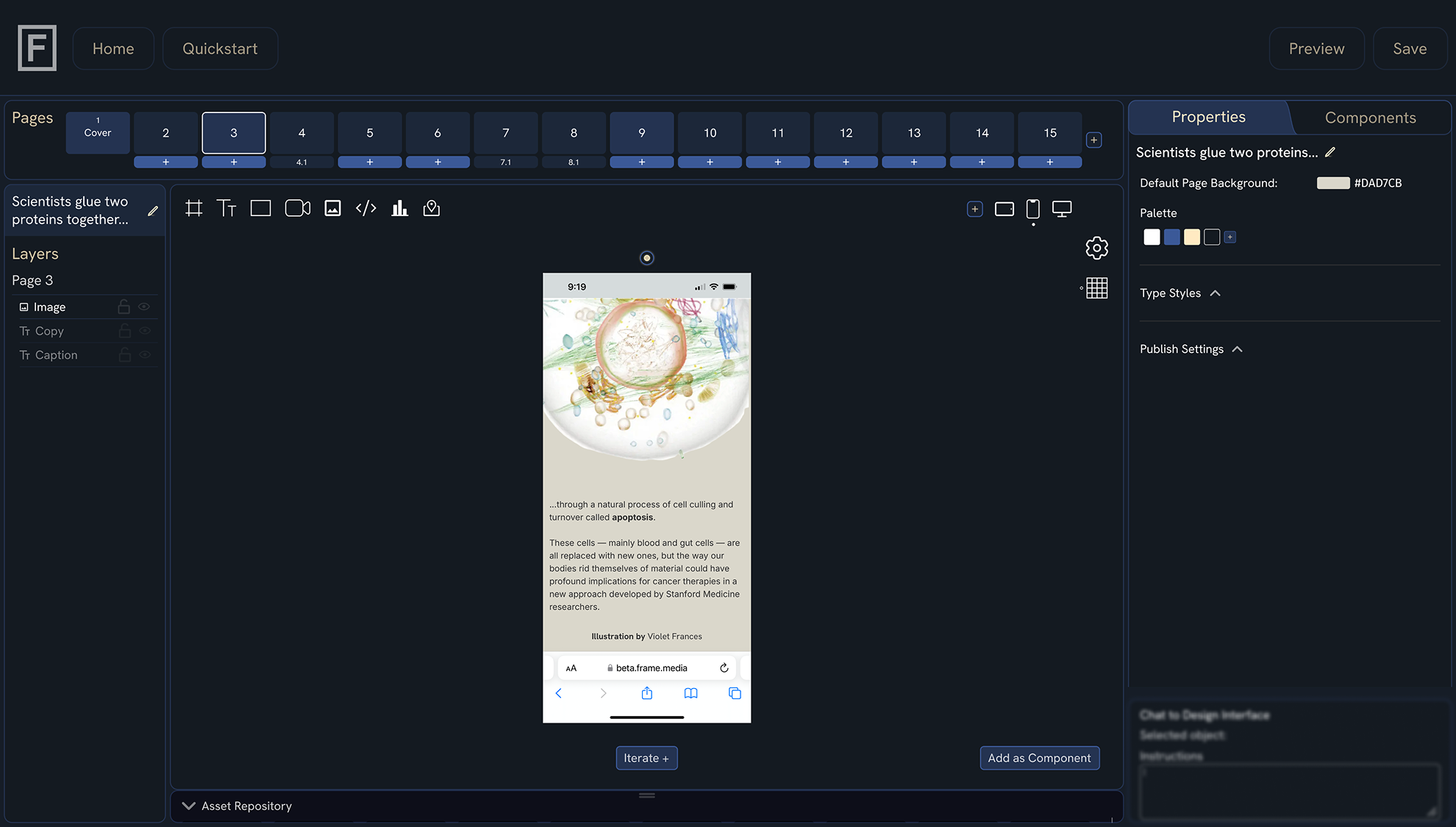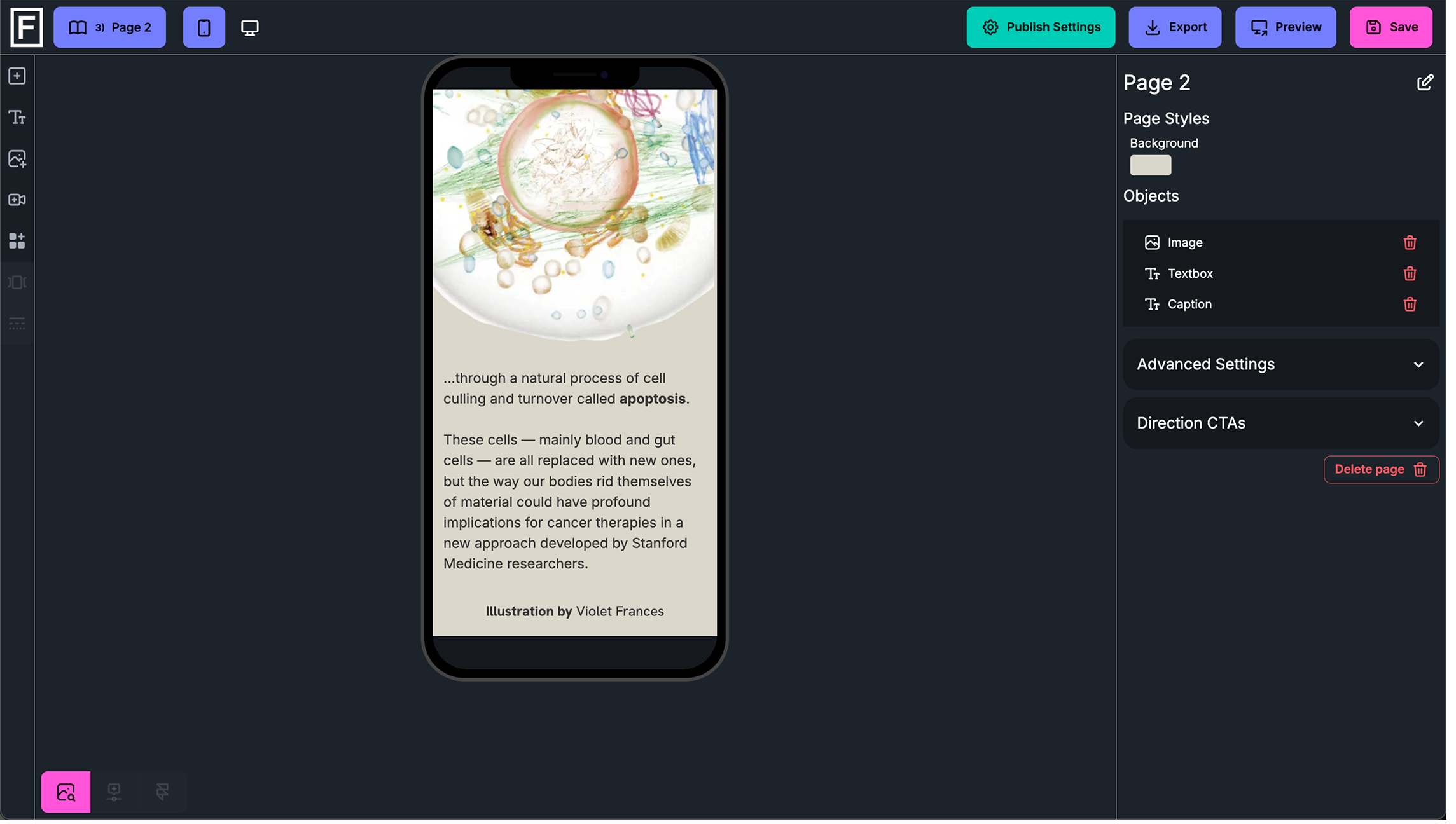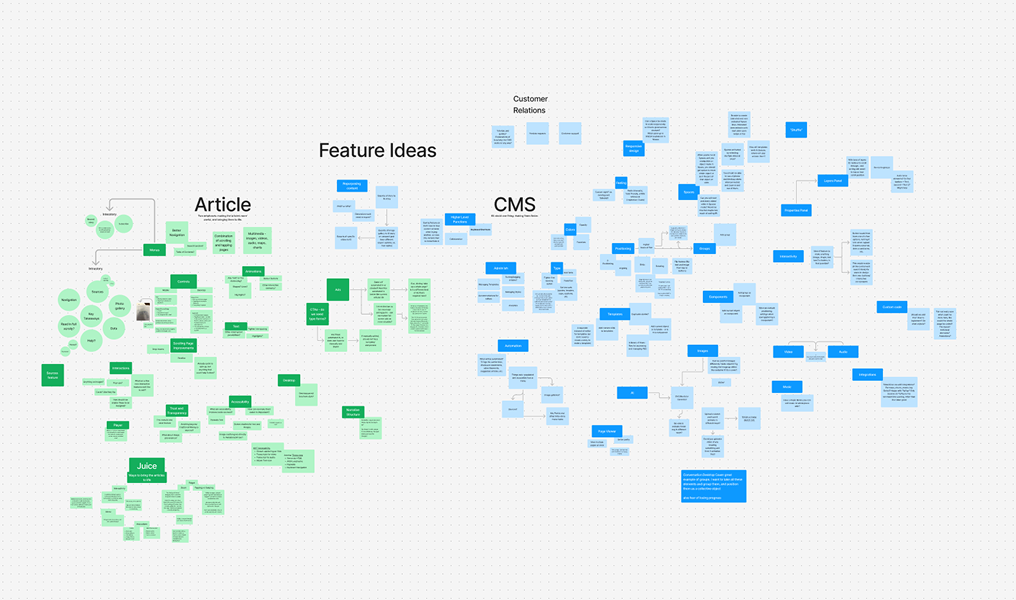CMS
Evolving a no-code design platform for usability, smoother workflows, and external adoption


brief
Transforming an internal tool into a product ready for external adoption.
My Contribution
- Designed four new UX streams to guide development
- Provided high fidelity designs for tickets and contributed PRs
- Used user feedback to steer feature prioritization in the roadmap
Outcome
Took a manual, time-intensive process taking ~20 hours down to ~2, along with new features for improved consistency, reliability, and collaboration.
Role:
Design Lead
Functions:
UI/UX, Product Management, Development
Duration:
14 months
Challenge
As the company pivoted to a B2B model, we needed to evolve an internal tool into a platform usable by external organizations.
The tool's strength was its quality of output; its weakness was inefficiency.
Goal
Refine the tool's core workflow for creating interactive articles.
If initially we had a manual, time-intensive editor, we were trying to create a printing press.
Pitch
The redesign aimed to tilt this balance in favor of publishers.
Three main areas for improvement:
Initial Input
Opportunity for automation here.
Positioning and Styling
As well a lack of positioning options meant some designs were impossible to render.
Iterating
Not needing a fully-flexible design tool, we had to create a custom concept for iterating.

Stories empty upon creation, meaning each page, text box, image, shape, etc. all had to be individually added and configured from scratch.
This alone took practiced users 30-45 minutes just to input content, prior to any real design of the pages or items themselves.
User Interviews
Designers
Most had experience creating visual assets, but less often responsive webpages.
Editors
They asked for a new interface for easily updating text and swapping assets.
Defining priorities for the redesign:
- Automate the initial input UX
- Design a scheme to help users intuit how objects would behave responsively across changing screen sizes
- Establish a component system for both speed and consistency
- Create a new UX dedicated to editors
Surveying other design tools and interviewing designers, producers, and editors across newsrooms, we began mapping an updated UX —
Clustered ideas to loosely organized site maps to detailed hierarchical feature lists and user flows.

— and produced the following north star for development:

An updated stage for seamless designing.
Users can view and edit multiple pages simultaneously, and critically adjust screen sizes to test how designs would respond on live pages from within the editor.
This design led development and my tasks shifted to:
Managing a Roadmap
Providing Acute Designs
Contributing PRs
Along the way, we ran prototypes with publications including Stanford Medicine Magazine, The Conversation, BCG, and NPR. After implementing AI to aid in the upfront allocation of content across pages, we put together polished articles in as little as two hours, with initial layouts in minutes.
outcome
Total article creation time: ~20 hours → ~2 hours
Clicks required for initial input: a repetitive hundreds → dozens
Reduced potential for errant and/or unresponsive designs and increased brand consistency via componentization.
New interface dedicated to writers and editors streamlining their workflows.